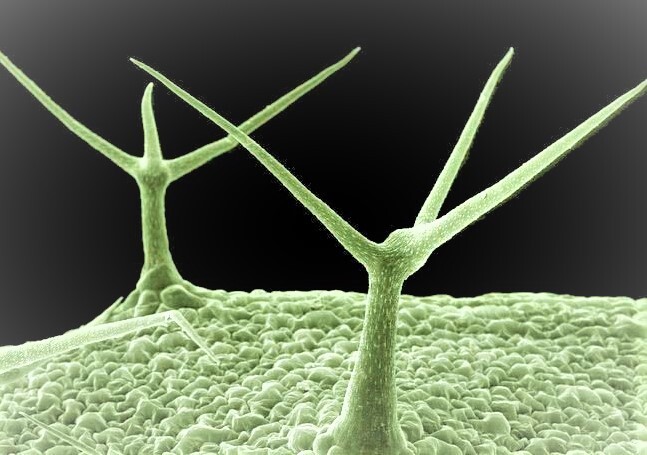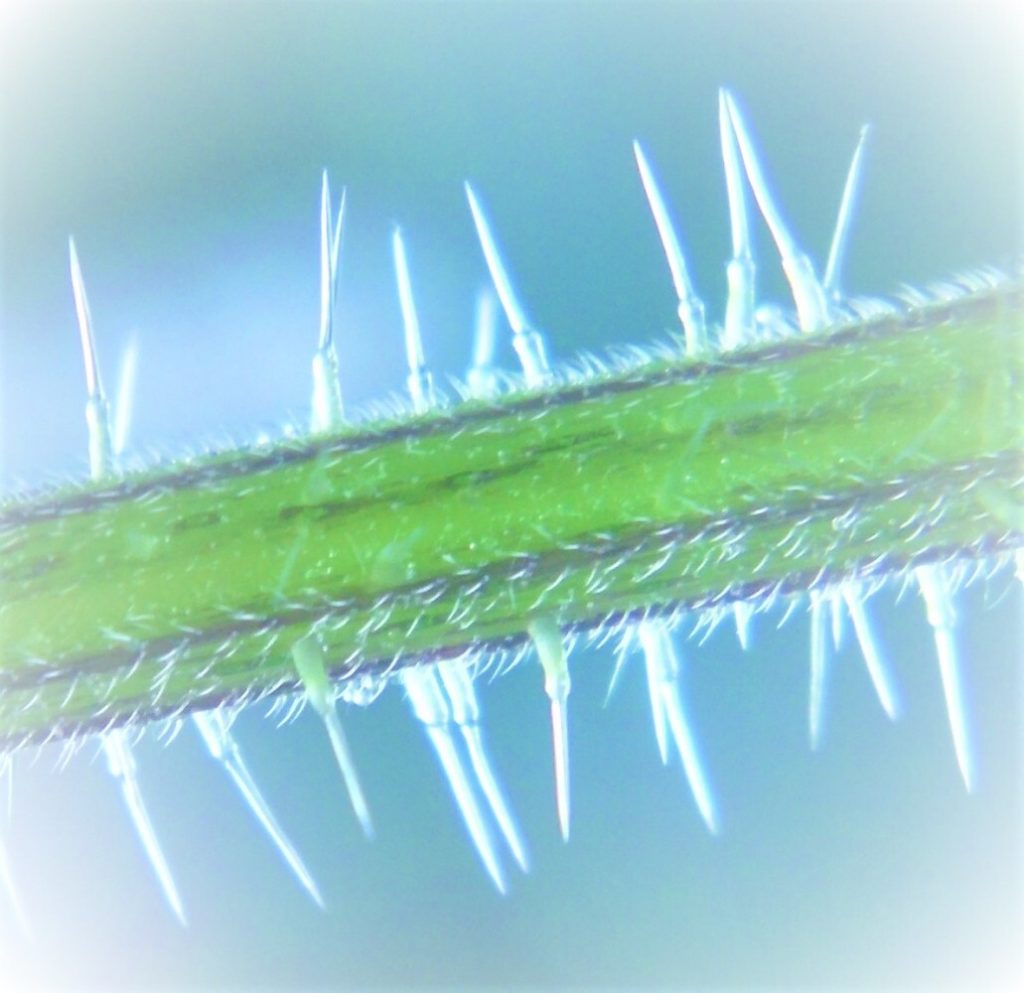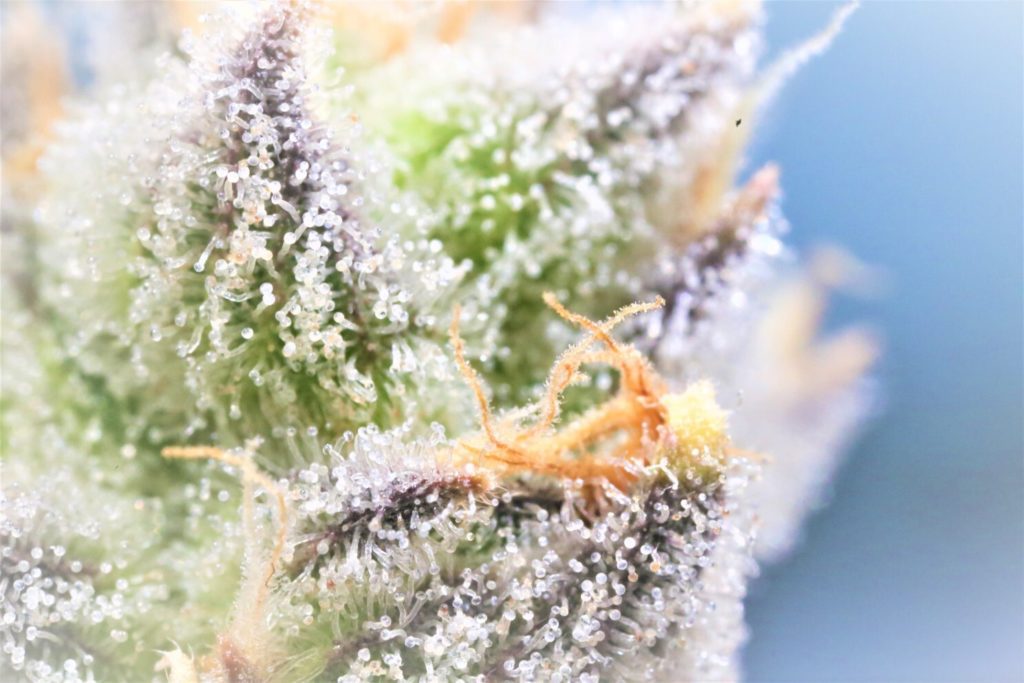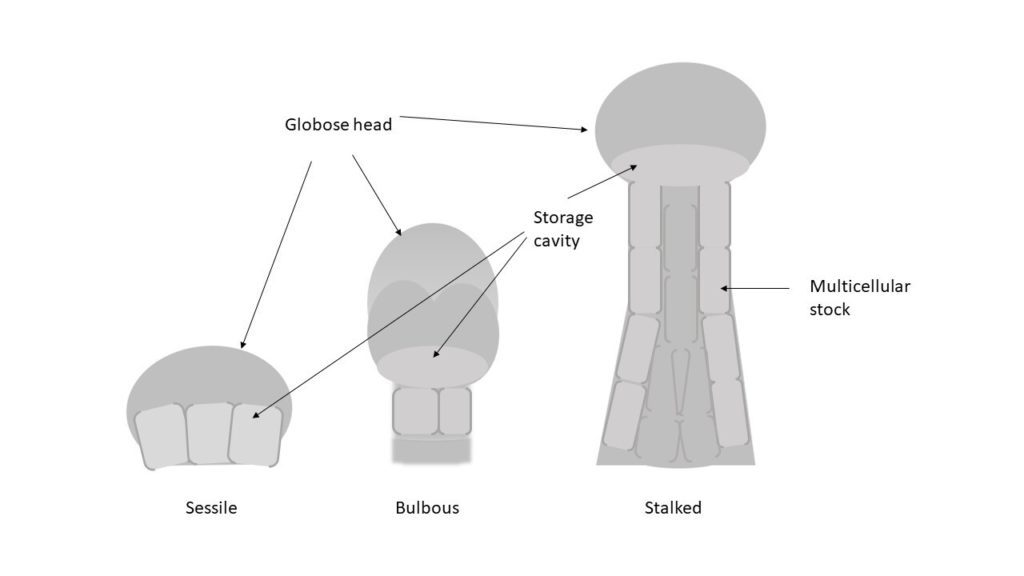Blog type: Articles
Most people in the cannabis industry know that high-value secondary metabolites, cannabinoids & terpenes, are produced and stored via resin glands known as trichomes – a hair-like protrusion found on leaves calyx, inflorescence, stem and stocks of female plants. What is typically less known is that these highly-specialised organs are extremely diverse and occur in almost all plant species, providing many different chemicals and functions from species to species.
Trichomes are described as hair-like outgrowth, and in the model species Arabidopsis thaliana, trichomes have 3 spikey peaks, as the name ‘trichome’ seems to infer – however, the word trichome descends from a Greek word meaning ‘cover with hair’. In modern botany, trichomes are better described as an extended outgrowth or appendage on the epidermal/surface layer of the aerial parts of a plant.

General Background
Trichomes can comprise of a single cell or can be multicellular and can be glandular or non-glandular. Ranging in size from a few micrometres (1 micrometre is 1000 times smaller than a millimetre) to centimetres, single-celled trichomes are often non-glandular and, unlike their glandular multi-celled counterparts, do not produce specialised metabolites (Payne 1978, Wagner 1991). It could be argued that over fruits, seeds, roots, bark, leaves and the rest of the enormously diverse range of harvestable plant parts, those glandular trichomes are the most interesting/diverse in chemical composition and could be described as secondary metabolite production factories (Wagner et al. 2004, Fridman et al. 2005). Many plants hold important and novel chemical ‘secrets’ in their trichomes, from essential oils & pharmaceutical components to nepetalactone – the active ingredient in catnip – and neurotransmitters, a range of which are produced by nettle stings (Schilmiller et al. 2008, Clark 1997). The fact that stinging nettles are capable of producing substances via their trichomes which cause inflammation and pain to humans, whereas cannabis trichomes produce a whole suite of substances which are potentially beneficial to health, including anti-inflammatory and pain relief properties, captures the range of chemical diversity quite well (Duke et al. 2000, Wagner et al. 2004).

Stinging nettle uses a specialised trichome to inject secondary metabolites into the skin of any animal that comes into contact with it.
Aside from a well-established and nascent range of high-value chemicals, trichomes are important in other plant functions, such as transpiration and water use efficacy, due to the fact trichomes tend to be highly hydrophobic (water repelling) (Fahn 1986). Their diverse roles and have been shown to influence many processes such as preventing herbivory, reducing microbial attacks and guarding against high light intensity & UV radiation (Wagner 2004).
Cannabis Trichomes

In cannabis plants, glandular trichomes are typically found in 3 different forms based on their surface morphologies: bulbous, sessile and stalked (figure 1) (Hammond & Mahlberg 1973). Of these 3 types, bulbous is both the smallest and contributes the least in terms of metabolite production. There has been debate over whether sessile and stalked trichomes are simply immature/mature versions of the same type of trichome or are of their own class (Dayanandan & Kaufman 1976, Livingston et al. 2019). The stalked and sessile types are anatomically analogous to those found in other species and are known as Peltate trichomes, which are similar to the sessile type, and Capitate trichomes, which are similar to the stalked type (Potter 2009, Glas et al. 2012, Huchelmann et al. 2017). In other species, it has been demonstrated that each type of glandular trichome produces specific specialised metabolites and that the different morphologies are associated with variation in the metabolites, but the chemical composition also depends on which part of the plant the trichome is located, for example, vegetative leaf versus inflorescence (Hammond & Mahlberg 1991). Until recently, in cannabis, it has remained unclear what contribution each trichome type provides to each cannabinoid and terpene levels. Tuner et al. 1978 noted that stalked trichomes produce more overall cannabinoids than sessile trichomes but could not separate the ratios of chemicals within each. A 2019 study by Livingston et al. has brought new insights and information to the chemical composition of glandular trichomes.

New Insights
Using a combination of clever imaging, utilising the autofluorescent properties of trichomes/cannabinoids, chemical composition analysis, transcriptomics and statistical analysis, Livingston et al. showed that sessile trichomes are most likely immature stalked trichomes. The evidence for this is due to there being typically more stalked trichomes on mature calyces than on shorter immature calyces, and this percentage difference correlates strongly with calyx length, which itself is an indicator of the calyx maturity. Furthermore, the study showed that terpene profiles varied greatly from plant to plant, and the monoterpenes increased substantially during the maturation of the calyx. Although this pattern was not seen in vegetative leaves as trichomes here tended to be higher in sesquiterpene levels, and whilst vegetative leaves and flowers carried similar individual cannabinoid composition, floral tissue typically carried much higher overall levels of cannabinoids. Taken collectively, this data indicates that both the sessile and stalked trichomes were chemically very similar and that terpenes (but not cannabinoids) have specialised metabolism in each of the different types of glandular trichomes.
Despite presenting convincing evidence that sessile trichomes are, in fact, immature stalked trichomes, the authors point out that a small number of sessile trichomes remain on mature calyces and that this was true on every sample tested. In addition to this, Livingston and colleagues provided transcriptional data indicating which genes are active in each of the different trichome types. Using a specialised centrifugal separation method, the authors were able to harvest and isolate each glandular trichome type. They then performed RNA sequencing on the isolated trichome types and revealed that although all glandular trichomes showed extremely high levels of genes associated with cannabinoid and terpene synthesis (geranyl diphosphate synthase – the precursor to both), there was specific upregulation of genes in stalked trichome versus those in bulbous trichomes. This data indicates that there is no cannabinoid specialisation in stalked and sessile trichomes. In addition, co-expression analysis revealed that CBDA synthase was highly co-expressed with terpene synthesis genes, and this was very unique to trichomes of the floral parts but not the vegetative parts of the plant. Overall, genes involved in cannabinoid and terpene synthesis were much higher in trichomes than in other tissue types, but trichomes of floral origins had higher levels of these genes than other trichomes, again, as would be expected (Livingston et al. 2019).
Trichomes – Final Thoughts
Much work remains to be done in determining the full uniqueness of the composition of trichomes in each of the many cultivars and tissue types, and as this article shows, it is a complex and lengthy study. However, as the cannabinoid and terpene factories of the plant, determining the chemical composition, the way genes are expressed within, and the way humans may interfere with this all help us understand more about the plant, its uniqueness, and the ways it can be utilised for enhancing human health.